What is a phobia?
Persistent and unreasonable fears of an object, activity, or situation result in an irresistible urge to avoid the perceived danger.
The person is aware of the overreaction but still cannot control it.
DSM-5 contains three disorders under the term phobia.
Agoraphobia (the fear of being alone or of open space)
Social Phobia (the fear of embarrassing oneself in public)
and Specific phobia, which this article is about.

What is a specific phobia?
Specific phobia is an anxiety disorder.
Exposure to the phobic stimulus leads to an immediate anxiety response.
The person realizes that the fear is extreme and unreasonable.
Most people do not seek treatment for these conditions, so cases largely go unreported.
What is the prevalence of specific phobias by age group?
Many phobic cases seen in kids are transient and resolve within a few months.
Most of the specific phobia cases are seen in adolescence between 13 to 17 years old. They become less frequent in older age.
How many types of phobia are there? (based on DSM-5)
According to the DSM five, specific phobias typically fall within five general categories:
including animals examples, dogs, cockroaches, snakes.
The natural environment includes heights, water, storms.
Blood-injection-injury, such injections, blood tests.
Situational, enclosed spaces, driving, airplanes.
A fifth category is, others. Includes phobias like fear of choking or vomiting that does not fit into one of the four categories.
What are the causes and risk factors of specific phobias?
A specific phobia develops after a previous trauma or exposure to the phobic source. However, other cases happen without previous exposure to the source, which is called innate specific phobia
The reasons why phobias develop are not fully understood.
Specific phobias tend to begin in childhood, whose developing brains are still growing patterns. It is not uncommon for a child to develop a spider phobia after watching an older sibling scream and run when in contact with a spider.
In addition to the environment, the research found implications of neurobiology, genetic.
Brain imaging in anxiety disorders including phobia demonstrated increased amygdala volumes. Amygdala is linked to emotions and processes fearful and threatening stimuli.
Some Phobic people have higher levels of serotonin: the higher the serotonin, the more prominent the anxiety levels in those people.
What are the signs and symptoms of specific phobia?
As defined earlier, the sudden experience of severe anxiety in the presence of a source of the phobia is part of the signs and symptoms. Those signs are pounding heart, profuse sweating, dizziness, digestive disturbance, shortness of breath, and chest pressure.
Some of the behavioral symptoms of phobia are running away from the trigger and avoiding the stimuli.
Depersonalization is another sign of phobia, and this is the feeling of unreality.
How to diagnose / what are the criteria to qualify for a specific phobia?
Six criteria are required to qualify for the diagnosis of specific phobia.
One, fear or anxiety is circumscribed to the presence of a particular situation or object.
Two, fear or anxiety is evoked nearly every time the individual comes into contact with the source of the phobia.
Three, The individual actively avoids the situation.
Four, fear, anxiety, or avoidance is persistent, typically lasting for six months or more.
Five, The fear or anxiety is out of proportion to the actual danger that the object or situation poses.
Six, The specific phobia must cause clinically significant distress or impairment in daily life.
How to treat specific phobia?
Non-Pharmacological treatment
Phobic behaviors may not be fully curable, but the goal of treatment is to help the person function adequately.
A psychologist or qualified mental health professionals decides what the best treatment for each case is.
Behavioral therapy aims to desensitize or unlearn certain behaviors toward phobic stimuli. Gradual exposure to the same situation the person fears may reduce anxiety.
Cognitive-behavioral therapy can help the person overcome negative thoughts that lead to phobic reactions.
Other alternative treatments are available for mental health professionals. Some of them still lack the required studies and data to endorse their safety and efficiency.
Pharmacological treatment
Pharmacotherapy is not the first line of treatment for specific phobias.
They have a limited role in the treatment plan.
Medications are used when exposure is not available or feasible.
Some medications used in these conditions are benzodiazepines.
They have anxiolytic properties, which means they reduce signs of anxiety. Antidepressants may be prescribed based on individual cases to treat anxiety and balance neurotransmitters such as serotonin in the brain.
How to manage a phobia at home?
Some food and beverages such as caffeine can aggravate anxiety and worsen the signs of a specific phobia disorder.
Relaxation techniques as deep breathing and meditation are helpful to retake control of one's behavior.
Physical activities like running reduce stress and promote the body to secret endorphins, reaching out to support groups to share concerns, and learn from others' experiences to control phobia.
Medical Arts Official, 2021.

